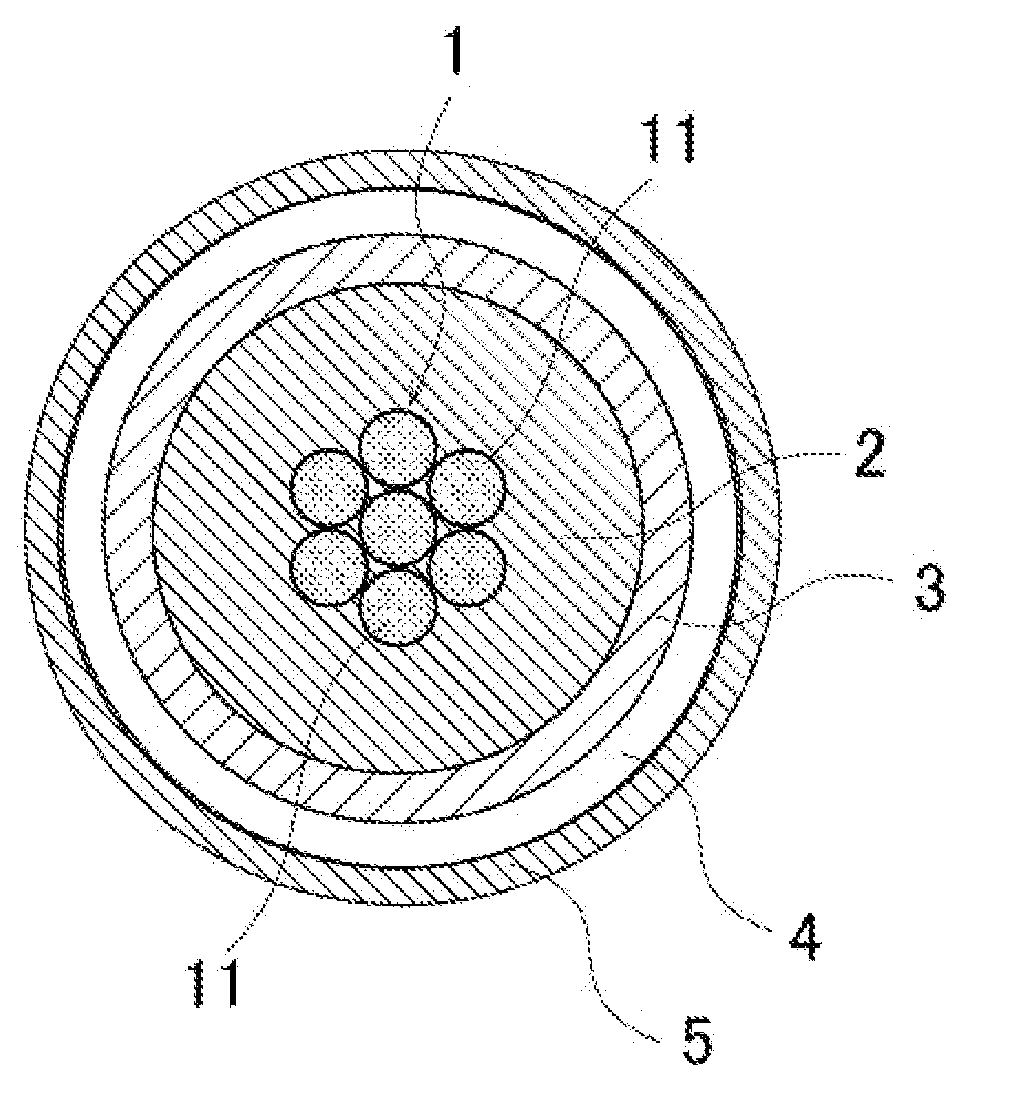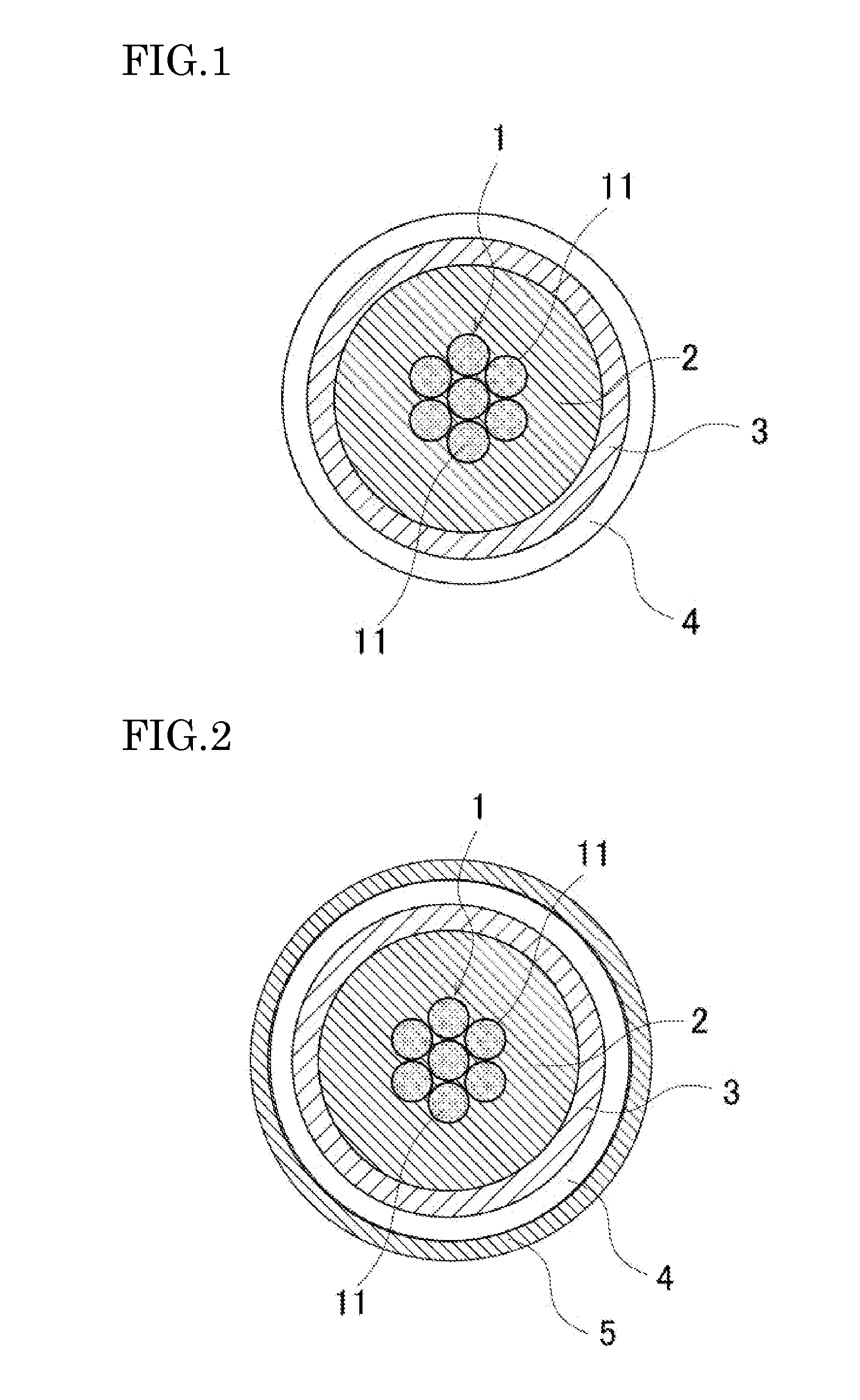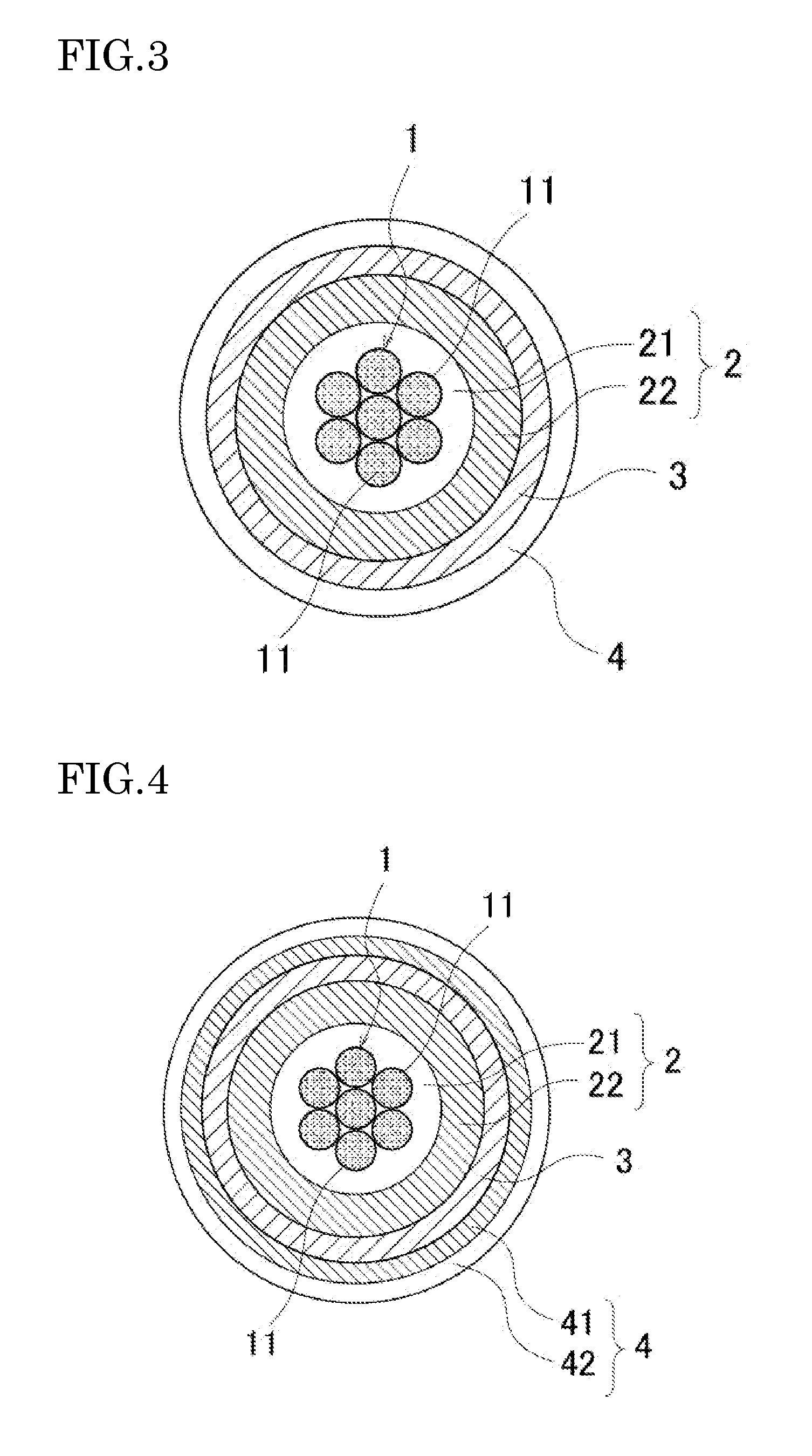Coaxial cable and manufacturing method of the same
a manufacturing method and coaxial cable technology, applied in the direction of power cables, cables, insulated conductors, etc., can solve the problems of external deformation, difficult to manufacture a long coaxial cable, and further micronizing the cabl
- Summary
- Abstract
- Description
- Claims
- Application Information
AI Technical Summary
Benefits of technology
Problems solved by technology
Method used
Image
Examples
first embodiment
[0035]FIG. 1 shows a sectional structure of an embodiment of a coaxial cable of the present invention. As shown in FIG. 1, in the coaxial cable, an internal insulating layer 2 is formed on an outer periphery of an electric conductor 1, and a conductive layer 3 is formed on an outer periphery of the internal insulating layer 2, and further an external insulating layer 4 is formed on an outer periphery of the conductive layer 3.
[0036]First, the electric conductor 1 is composed of long central twisted conductors 11 with cross-sectional face formed into round shapes (also called core wires 11 hereinafter). Metal is used in the central conductors 11, and for example a copper alloy is used. The central conductors 11 may be made of, for example, a single copper wire or a plurality of twisted wires or braided wires, and hot dip plating or tin plating by electrolytic conversion treatment may be applied to the copper wire.
[0037]Although as an insulating layer, resin of a low dielectric consta...
second embodiment
[0069]FIG. 3 shows a cross-sectional structure of another embodiment of the coaxial cable. A different point from the first embodiment is that the internal insulating layer 2 formed on the outer periphery of the electric conductor 1 has a two-layer structure. Namely, in the internal insulating layer 2 formed on the outer periphery of the electric conductor 1, PFA having low adhesion compared with adhesion of the grafted PFA is used in an inner layer (also called a first internal insulating layer 21 hereinafter), and a grafted PFA having relatively high adhesion is used in an outer layer (also called a second internal insulating layer 22 hereinafter) formed on the outer periphery of the inner layer.
[0070]By manufacturing such a coaxial cable, the coaxial cable capable of responding to the following case can be obtained. Namely, when the adhesion between the internal insulating layer 2 and the conductive layer 3 is desired, although the adhesion between the core wires 11 of the electr...
third embodiment
[0071]FIG. 4 shows a cross-sectional structure of another embodiment of the coaxial cable of the present invention.
[0072]Different points from the first embodiment are that the internal insulating layer 2 formed on the outer periphery of the electric conductor 1 has a two-layer structure, and the external insulating layer 4 formed on the outer periphery of the conductive layer 3 has a two-layer structure. Namely, in the external insulating layer 4 formed on the outer periphery of the conductive layer 3, the grafted PFA having relatively high adhesion is used in an inner layer (also called a first external insulating layer 41 hereinafter), and the PFA having lower adhesion than the adhesion of the grafted PFA is used in an outer layer (also called a second external insulating layer 42).
[0073]By manufacturing the aforementioned coaxial cable, the following effect can be obtained.
[0074]Namely, by sandwiching the conductive layer 3, being the metal nanoparticle paste sintered body, betw...
PUM
| Property | Measurement | Unit |
|---|---|---|
| size | aaaaa | aaaaa |
| particle size | aaaaa | aaaaa |
| wavelength | aaaaa | aaaaa |
Abstract
Description
Claims
Application Information
 Login to View More
Login to View More - R&D
- Intellectual Property
- Life Sciences
- Materials
- Tech Scout
- Unparalleled Data Quality
- Higher Quality Content
- 60% Fewer Hallucinations
Browse by: Latest US Patents, China's latest patents, Technical Efficacy Thesaurus, Application Domain, Technology Topic, Popular Technical Reports.
© 2025 PatSnap. All rights reserved.Legal|Privacy policy|Modern Slavery Act Transparency Statement|Sitemap|About US| Contact US: help@patsnap.com



